9. Soft Robotics¶
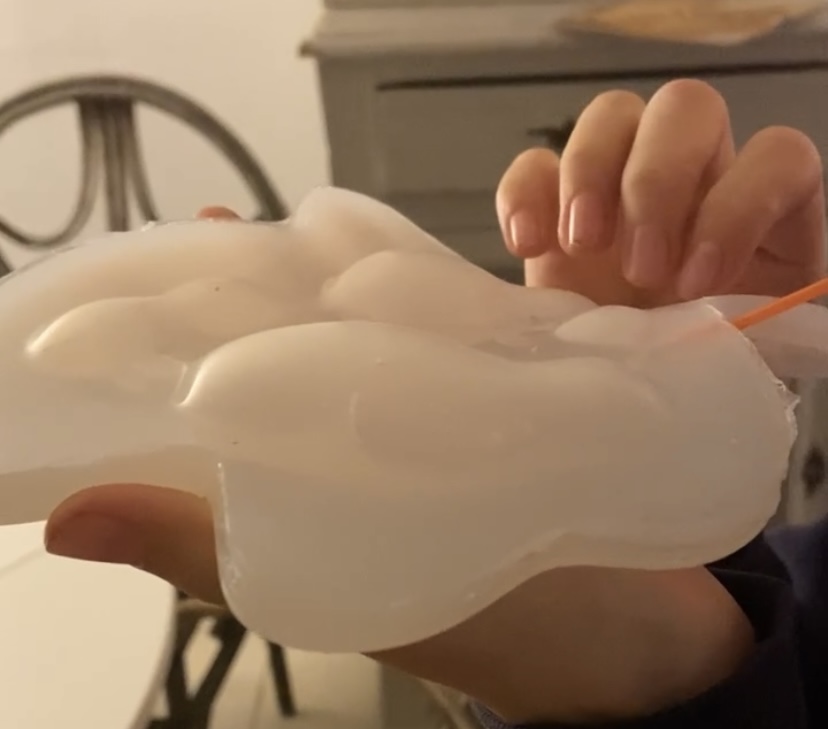
References and Inspiration¶
I was inspired by the installation Plantoid V2 of the Brussels origami-artist Dewi Brunet that I recently saw in Le Pavillon in Namur.
The Dutch Tanja Smeets exhibits with her installation 'Nebula and the Soft Machine'soft robotics at the Is it Alive? exhibition in Textielmuseum Utrecht:
I also liked the design of the Adidas Superstars "Bubble" shells because of their inflatable looks:
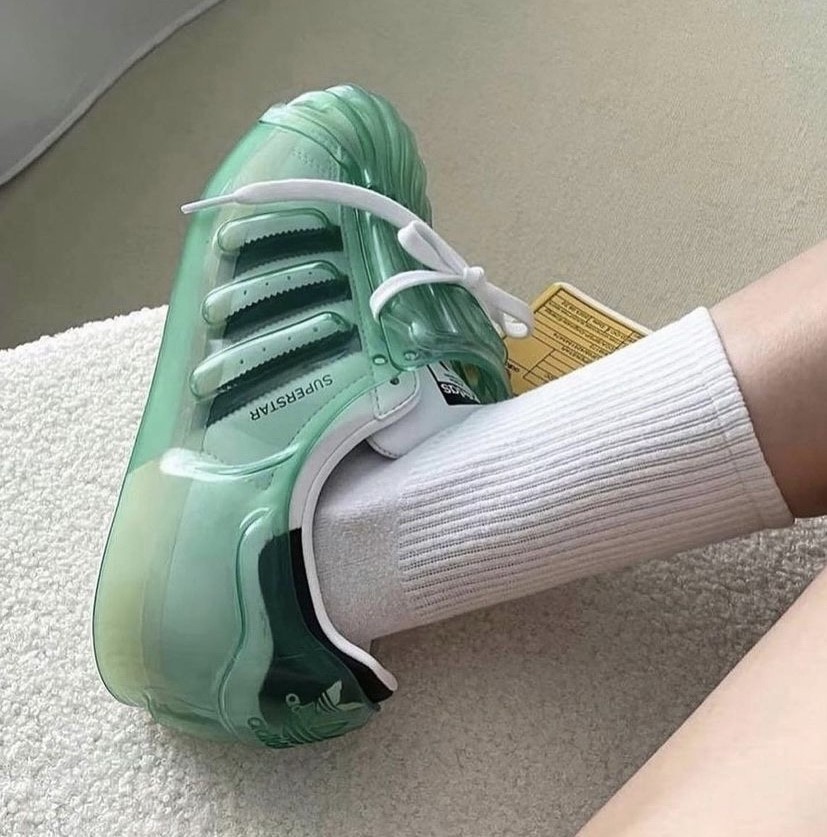
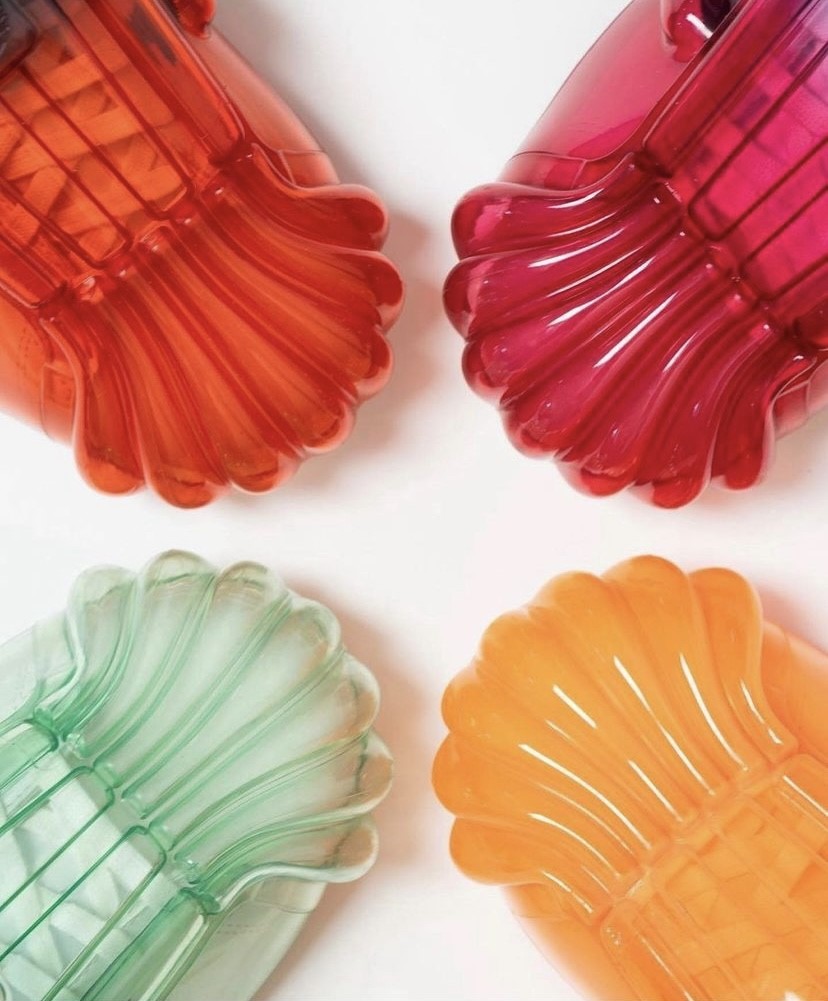
Process and workflow¶
This week I explored the techniques of molding and casting silicone, artificial muscles and different kind of inflatables.
MOLDING AND CASTING SILICONE¶
Alumni Loana Flores inspired my with her very nice and bubble silicone mold.

I wanted to try a similar one!
1.Making a mold¶
I designed a mold with Inkscape, here you can find the file 1 and file 2. I then used the lasercutter Flux Beambox to fabricate it.
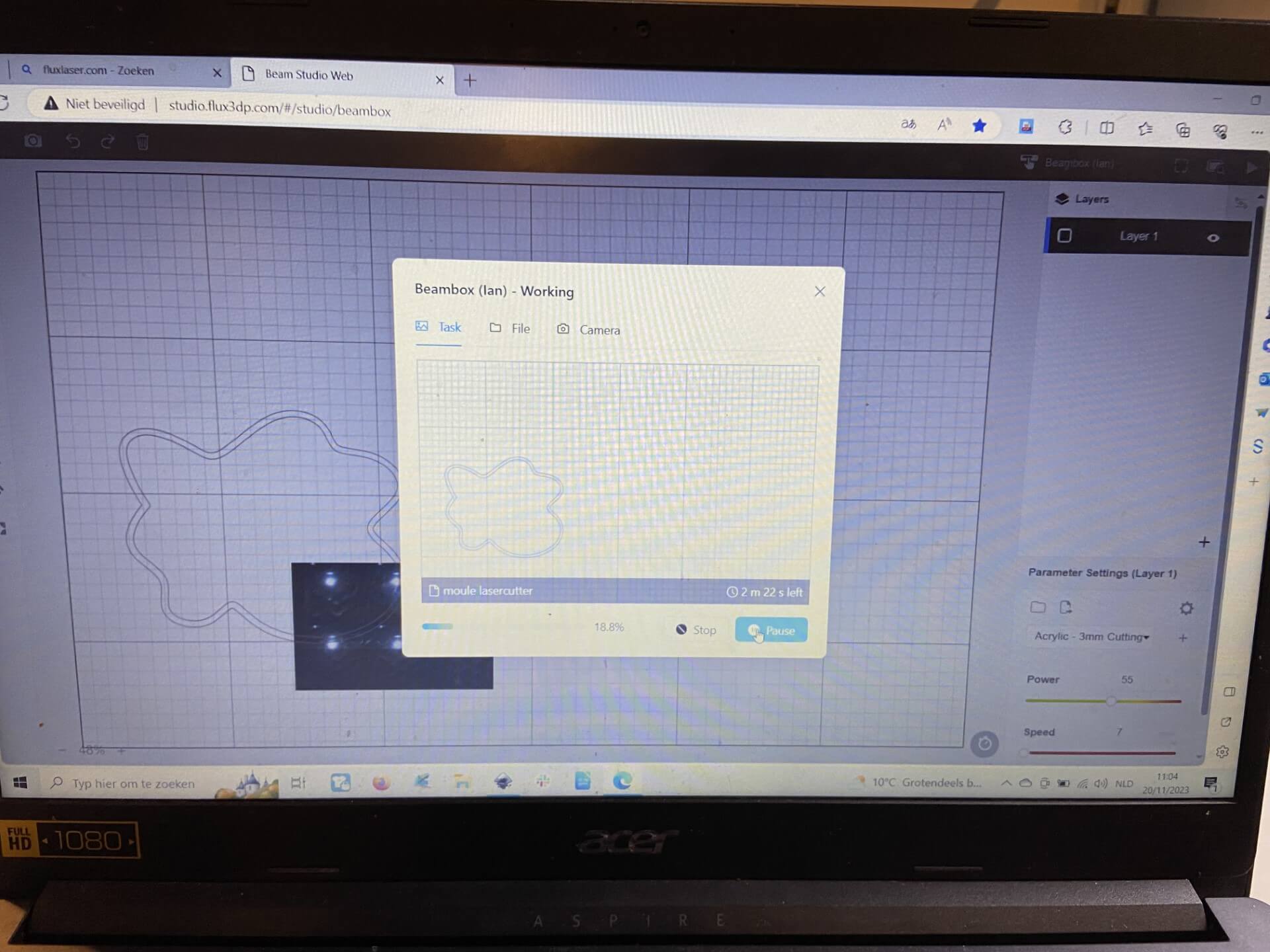

After lasercutting the 5 different parts I had to assembly them: three parts for the upper mold and two parts for the bottum mold.
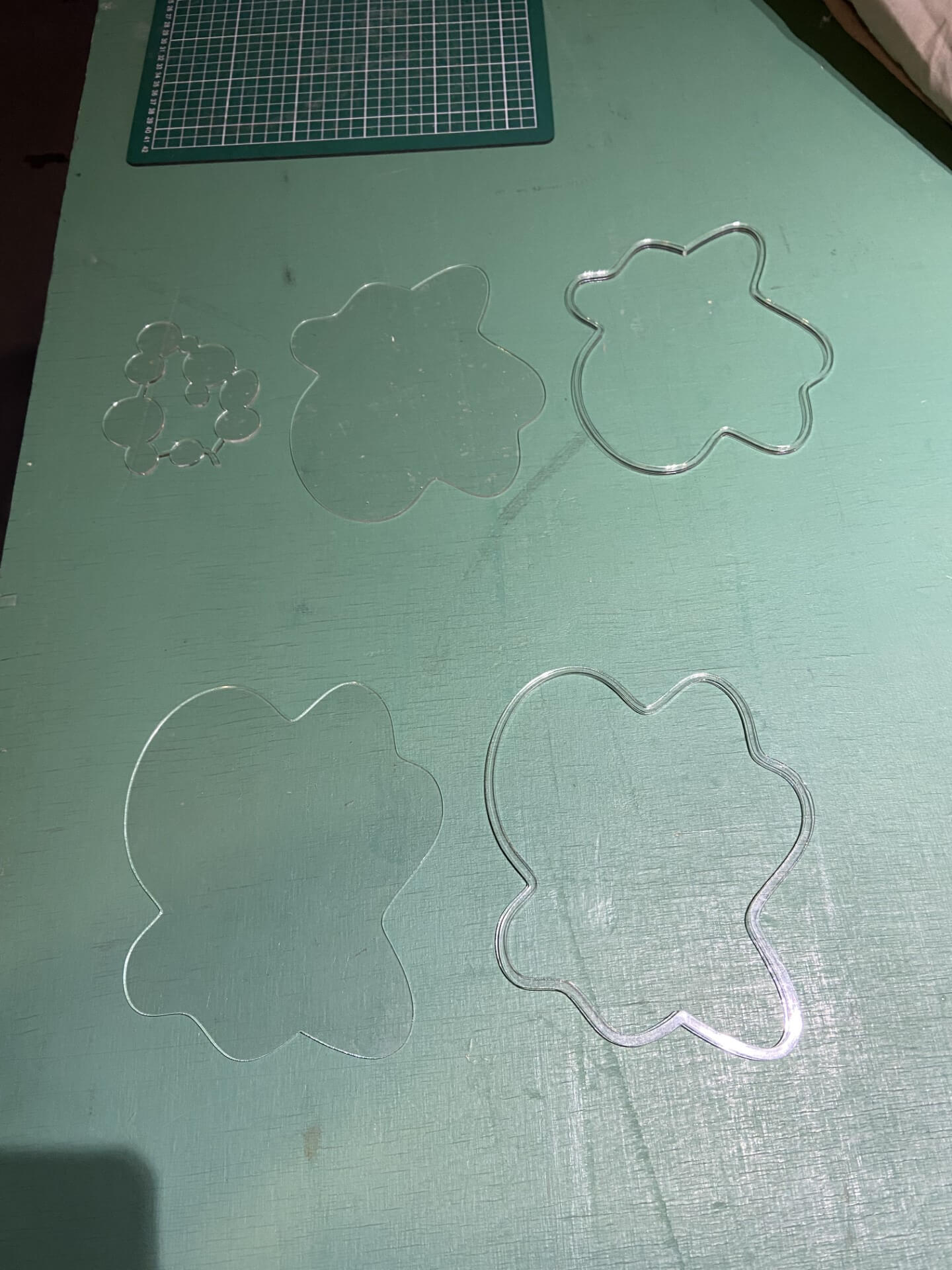
I glued them together with Pattex Instant Glue.
2.Casting¶
I followed the instructions of the tutorial of Adriana Cabrera to do the casting. The silicone I used is Silicone Ecoflex 00-30.
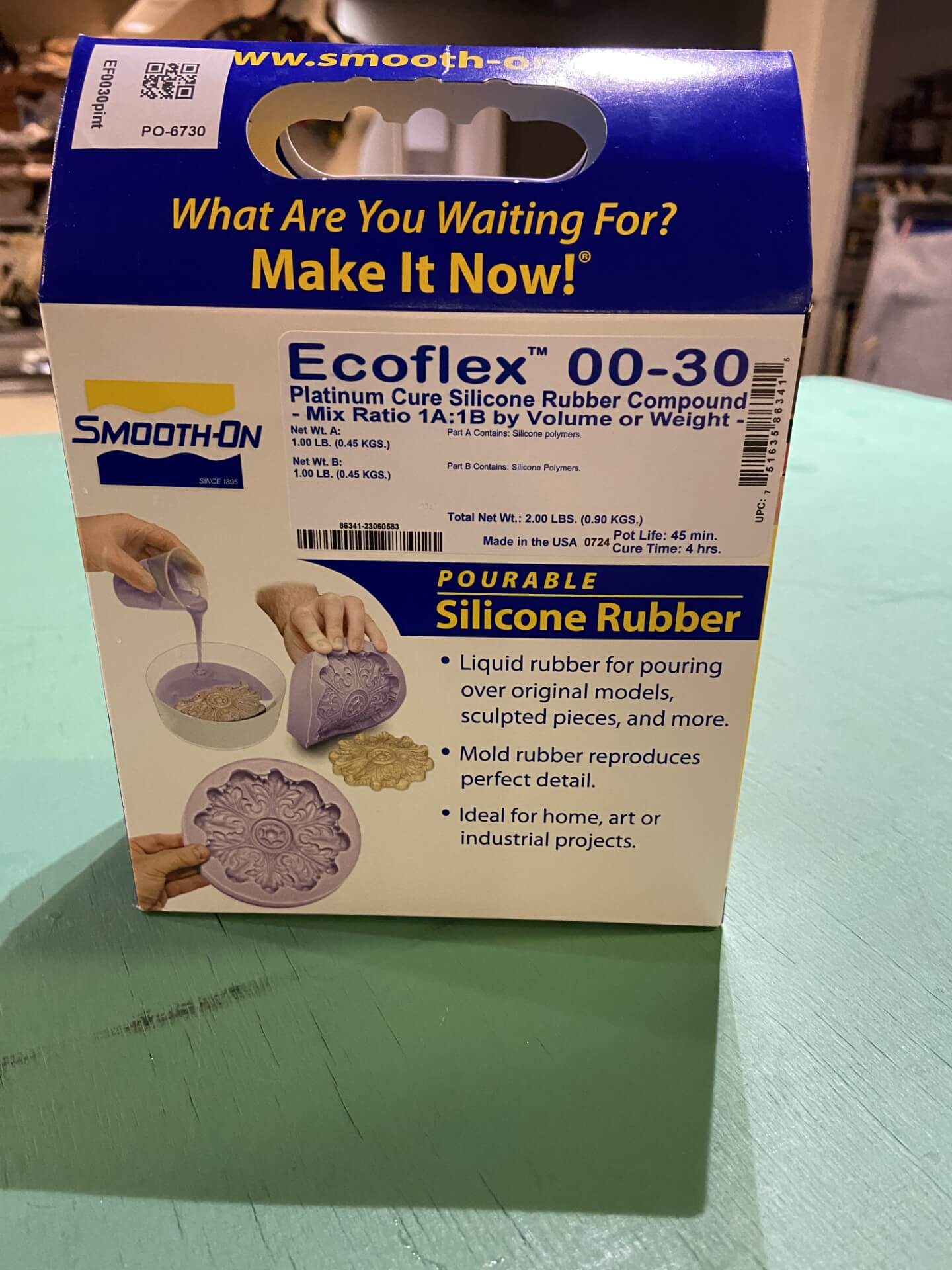
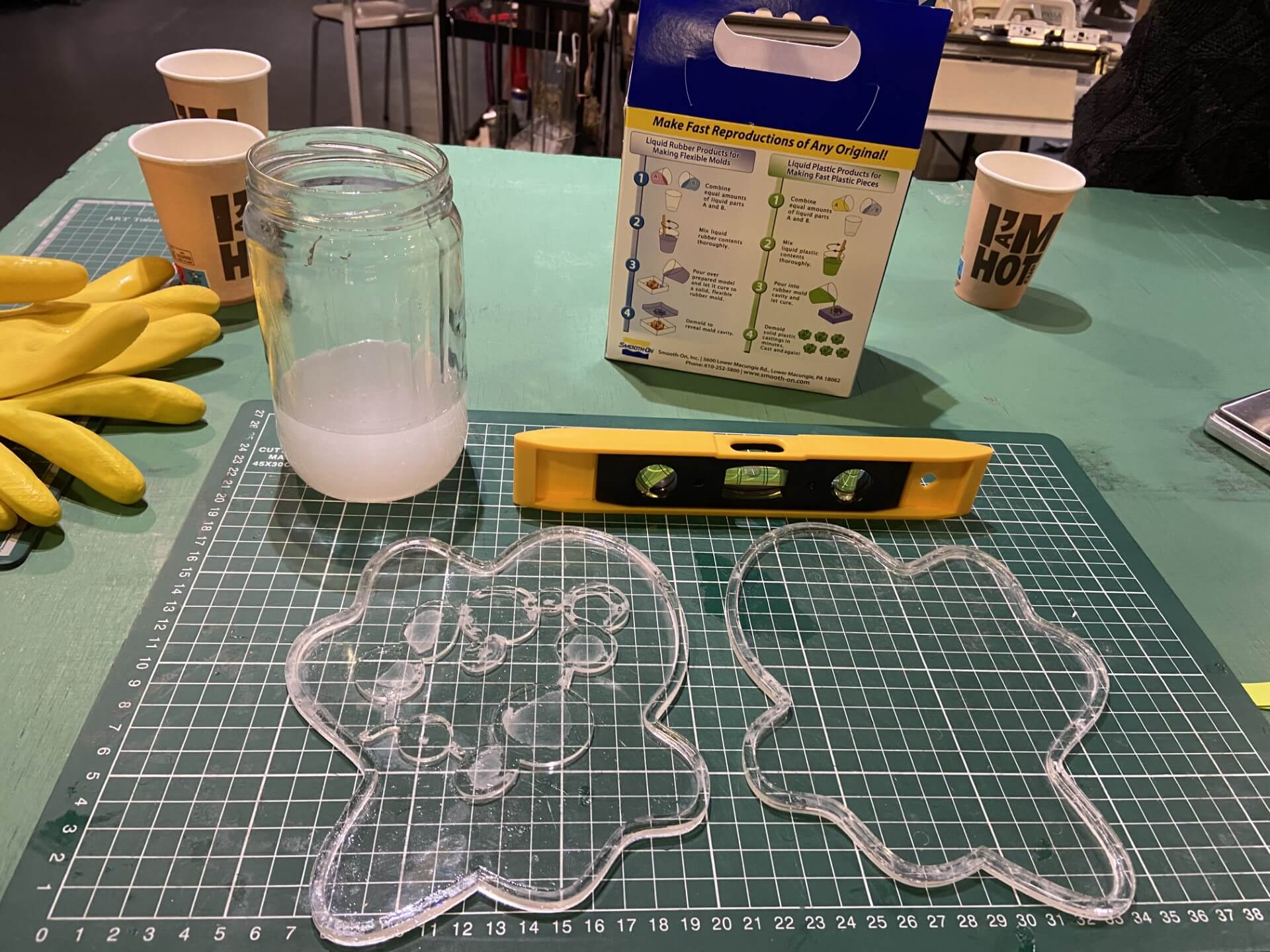
After drying for at least 4 hours I could unmold my silicone cast.
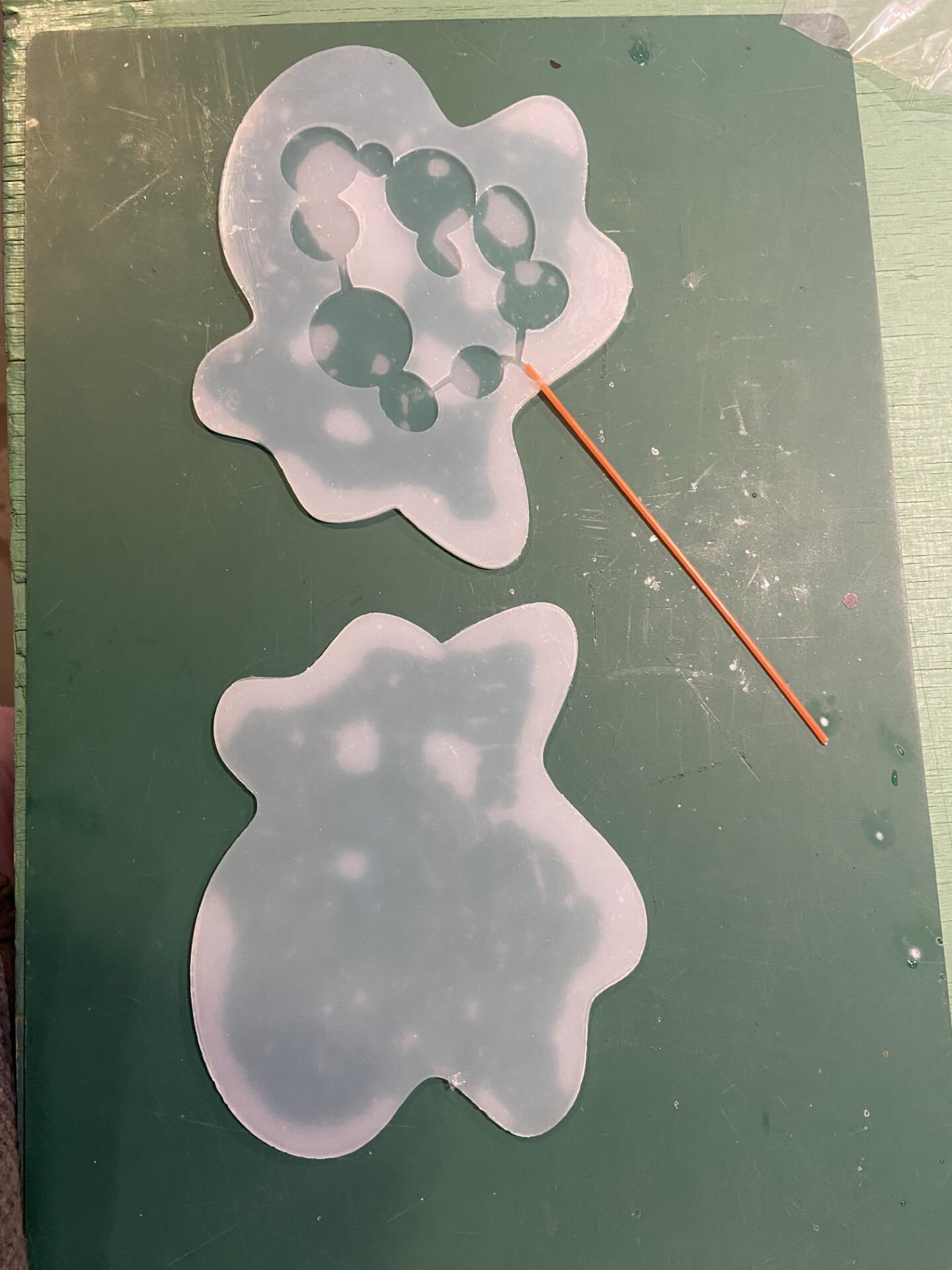
Then I had to carefully glue the upper mold to the bottom one by using a small amount of silicone. I left it dry for another 4 hours.
This was my final result:
There was a little part inside the mold that hadn't been glued, so at some part of my silicone-result I had a bigger bubble. But in general I was happy with succeeding the process of casting a silicone mold.
ARTIFICIAL MUSCLE¶
I followed this Fabricademy tutorial of Adriana Cabrera to make an artificial muscle.
I looked for a fabric that could be streched in both sides, I cutted out a long small piece and I sewed the piece together in the length.
A small balloon was put inside of the fabrictunnel I just sewed.
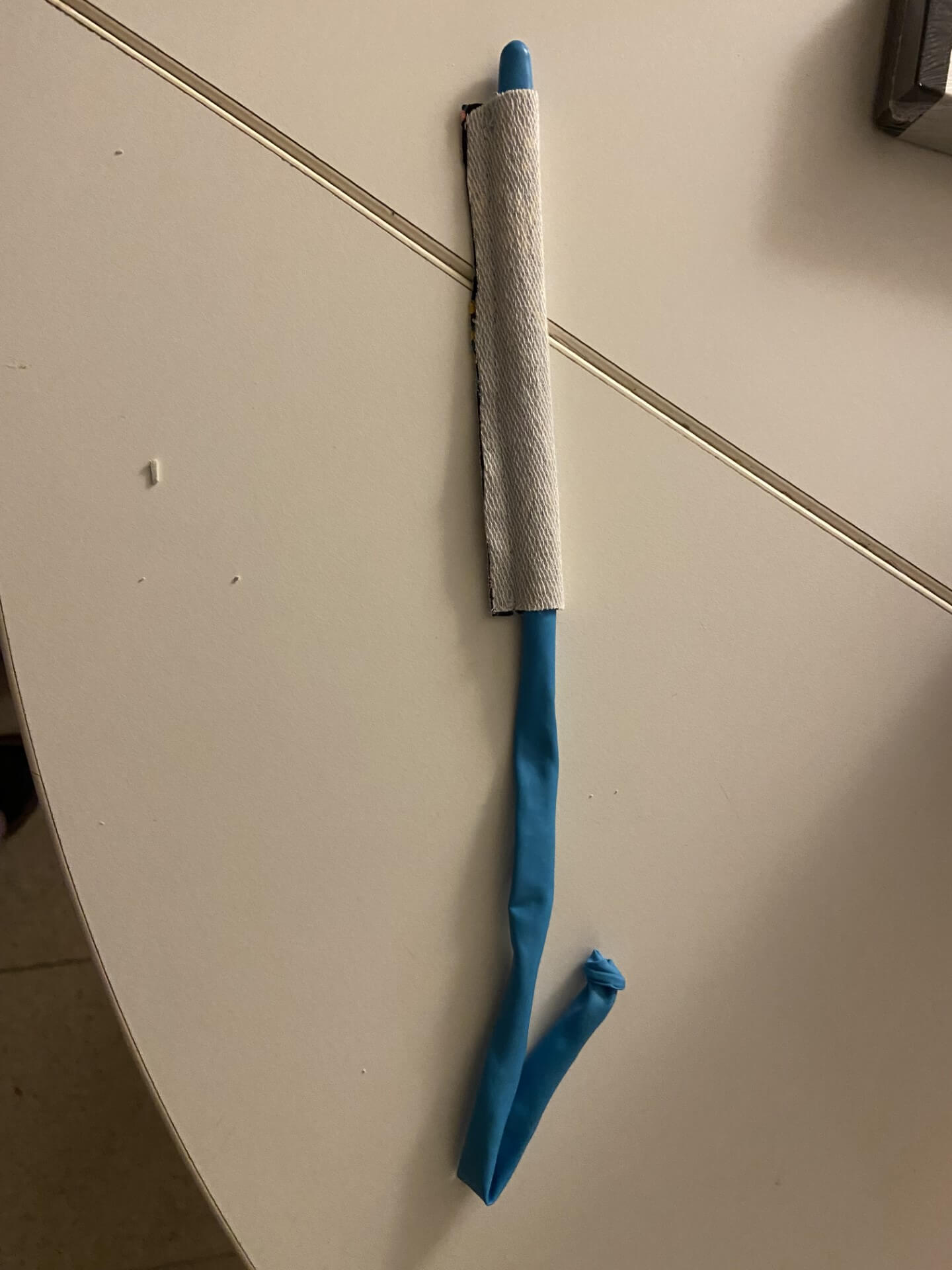
I firmly tied beginning and end of my tunnel around the balloon and I then blew the balloon to see if my artificial muscle was working.
My artificial muscle was actually moving in both sides at the same time (in the length and the width), so it was not completely working as it should be.
I suppose it's because I used a strechy fabric instead of the braided cables Adriana worked with.
INFLATABLES¶
I made several kinds of inflatables and I had a lot of fun!
Here you find the general scheme to be used to make inflatables with vinyl sheets and baking paper.
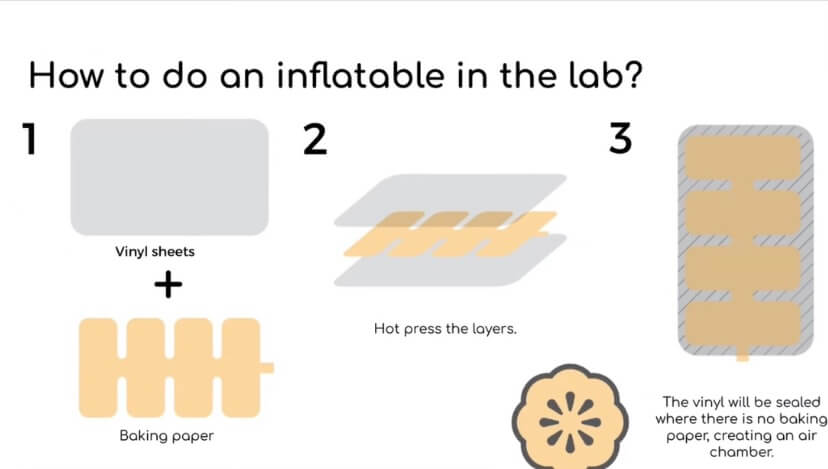
1.Rotation¶
I used the following scheme to make an inflatable with rotation:

To seal the two vinylsheets, I used an iron.
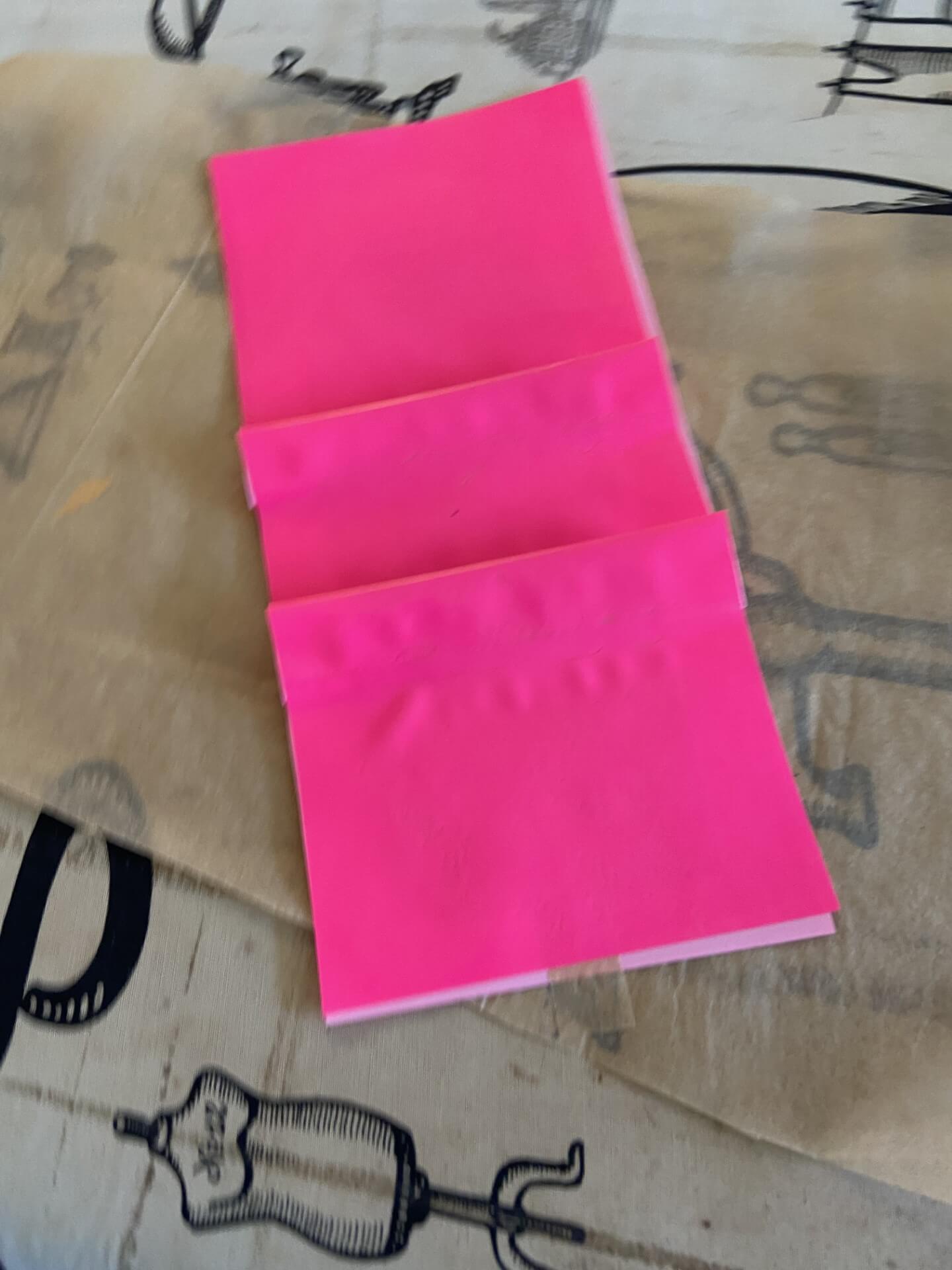
I liked the result and would like to explore more of it while integrating fabric into this.
2.Bending¶
Here you see the general sheme to be used to make a bending inflatable:
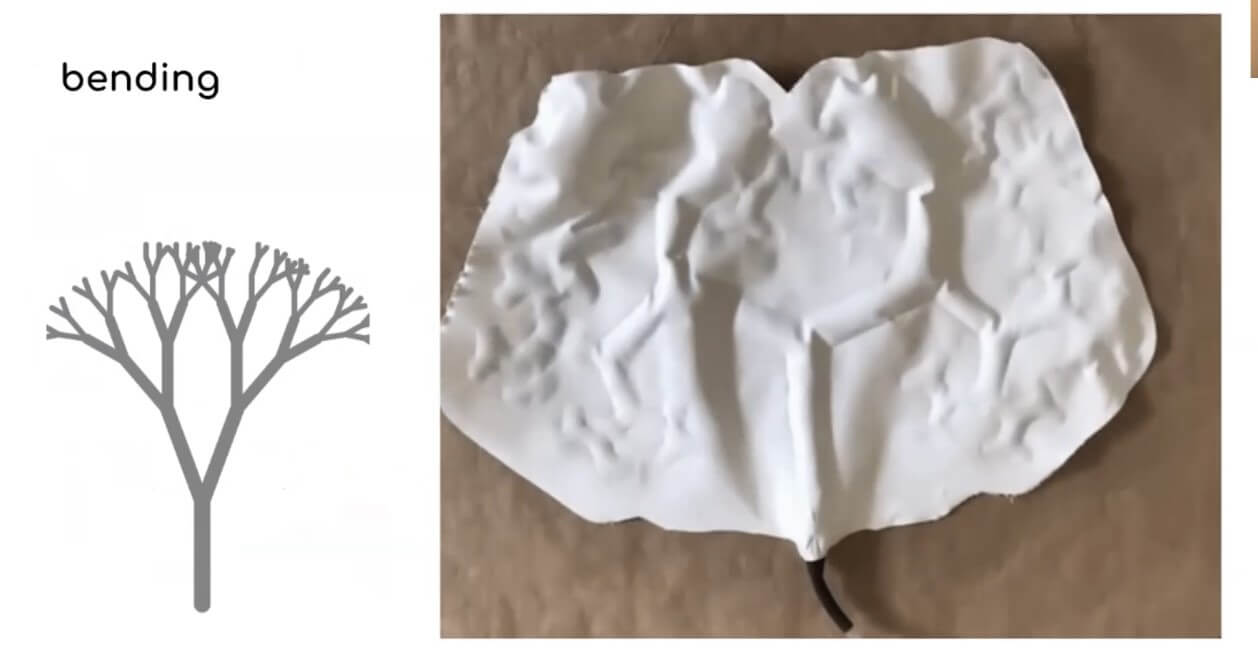
I cutted out the following pattern in bakingpaper. I ironned the inside of the pattern between my to vinylsheets.

Here you see the result while blowing in it:
3.Shrink¶
My first attempt didn't succeed. I folded a piece of paper origami-wise and wanted to make an inflatable from it.

The result was just a small balloon with my folded paper loose inside the inflatable part.
My second attempt was more succesfull. I cutted a zigzagpattern out of bakingpaper.
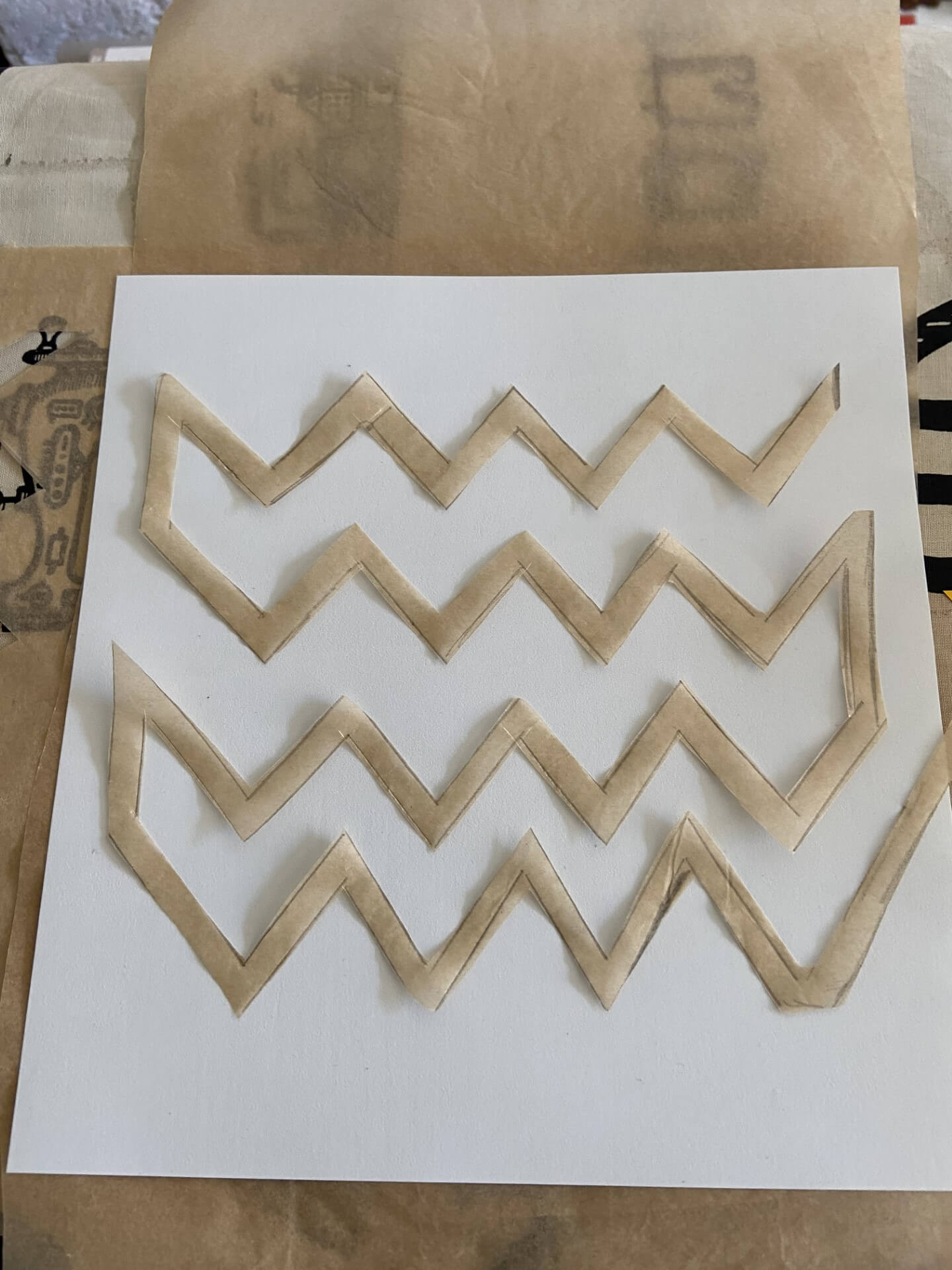
But because I used two different qualities of vinylsheets, one sheet melted faster than the other and the result was a crack in the zigzag-airballoon.
4.Origami¶
In origami I wanted to make a waterbomb.
I followed this tutorial to make it:
First I made it in paper but after a few times blowing inside of it, the paper was completely wet. So I decided to iron vinyl on it to make the paper stronger though still easy to fold.

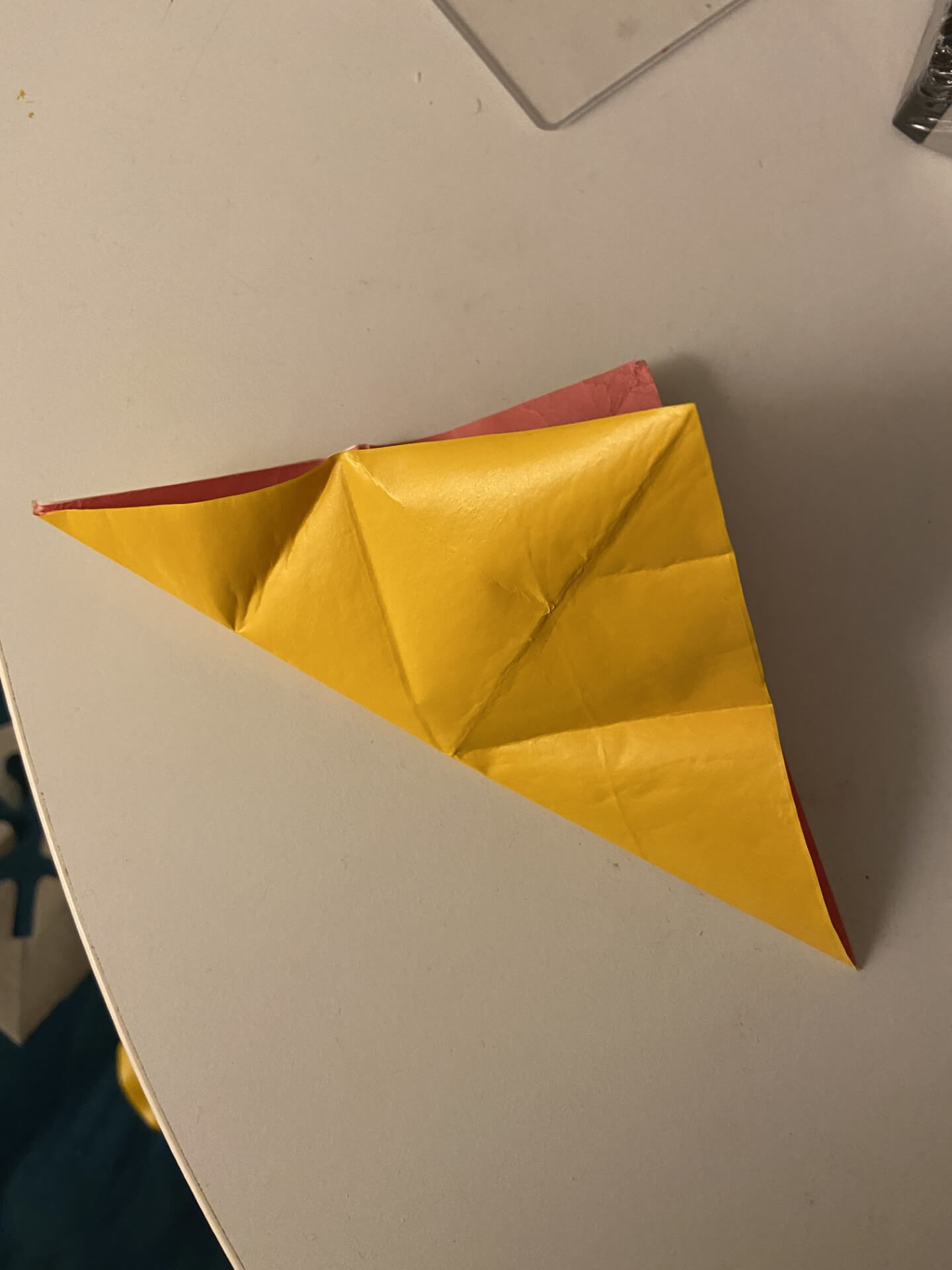
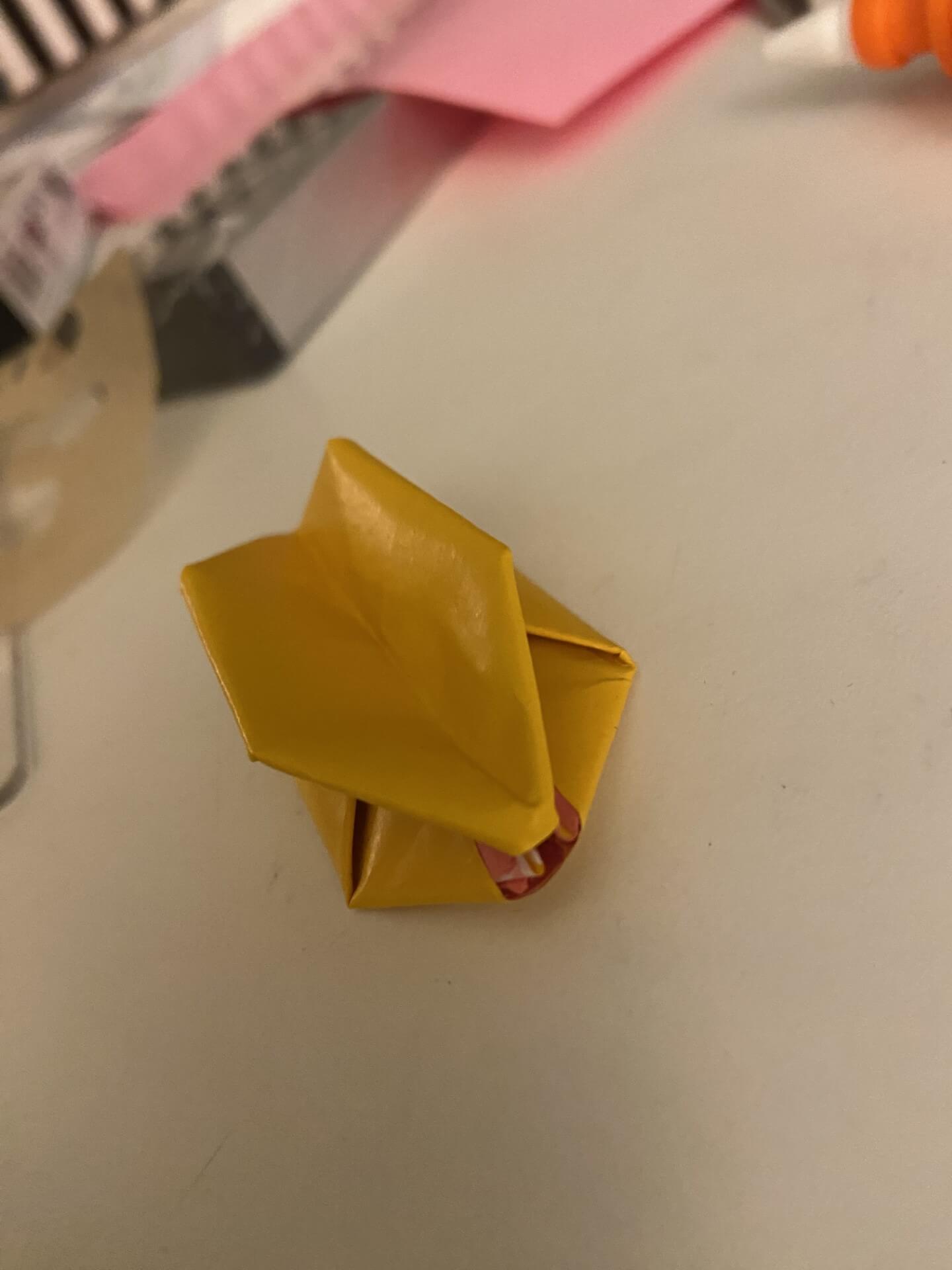
The final result was easy to inflate by blowing inside. But it did not inflate when putting a tube inside the opening.
5.Inflatables with biomaterials¶
I tried to make some inflatables with a biomaterial made of gelatine-silicone and one made of alginate.
Gelatine-silicone¶
This was the recipe I used:
* 48gr of gelatine powder
* 240 ml of water
* 48 gr of glycerine
* Some drops of Cosguard
I cutted a simple form in bakingpaper and when casting the gelatine-silicone into the mold I sandwiched it between the casted layers.
The result seemed nice but I could inflate it just a little bit the first time blowing in it and afterwards the result was almost nihil.
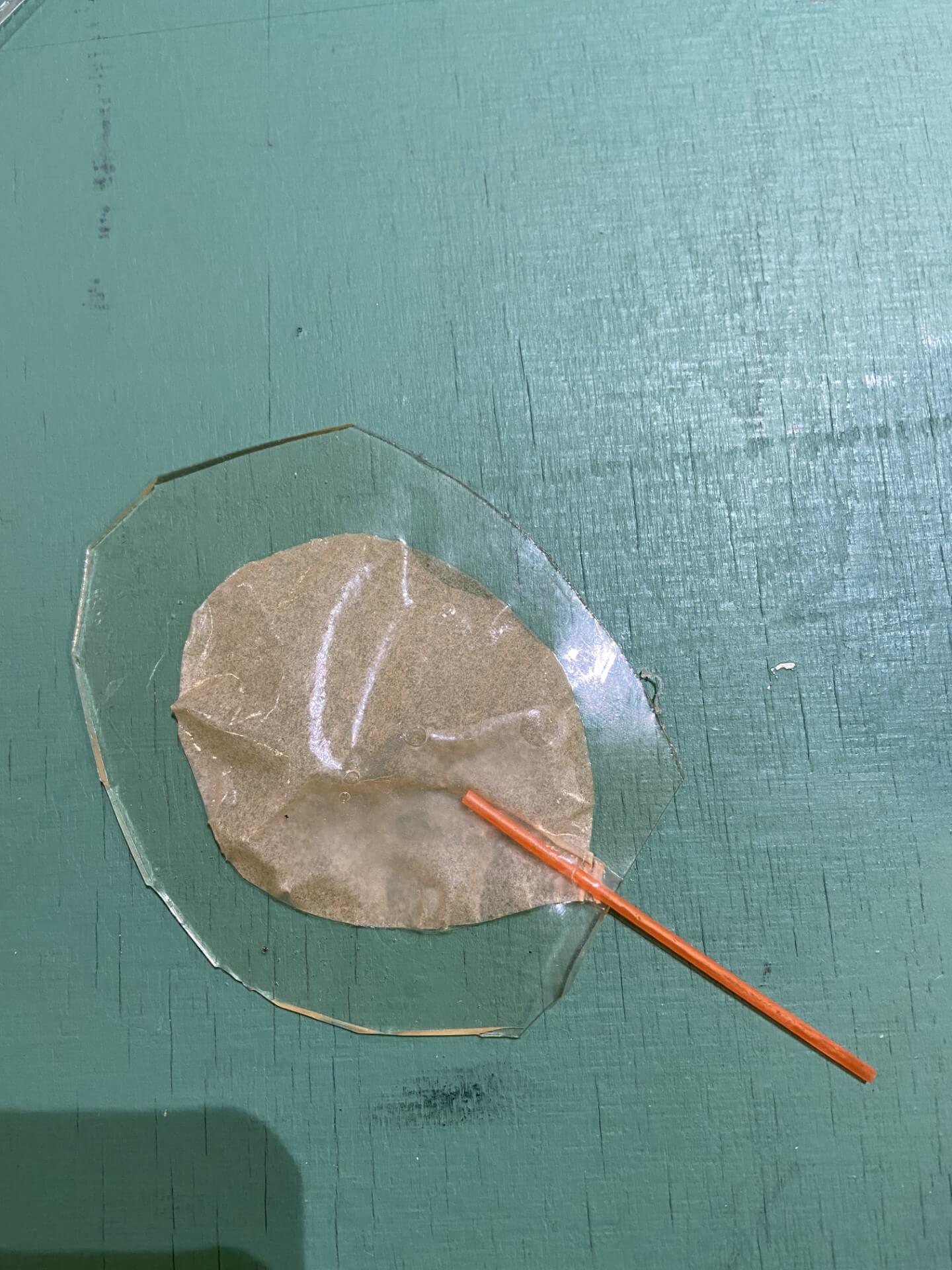

Alginate¶
I also tried a recipe with alginate. I followed the instructions of Luana Flores
* 12gr of alginate
* 12gr of olive oil
* 200ml of water
* 48ml of glycerine
Mix with electric mixer the preparation
I casted in an embroidery loop with a simple form cutted out in bakingpaper and sanwiched it between two layers of alginate biomaterial.
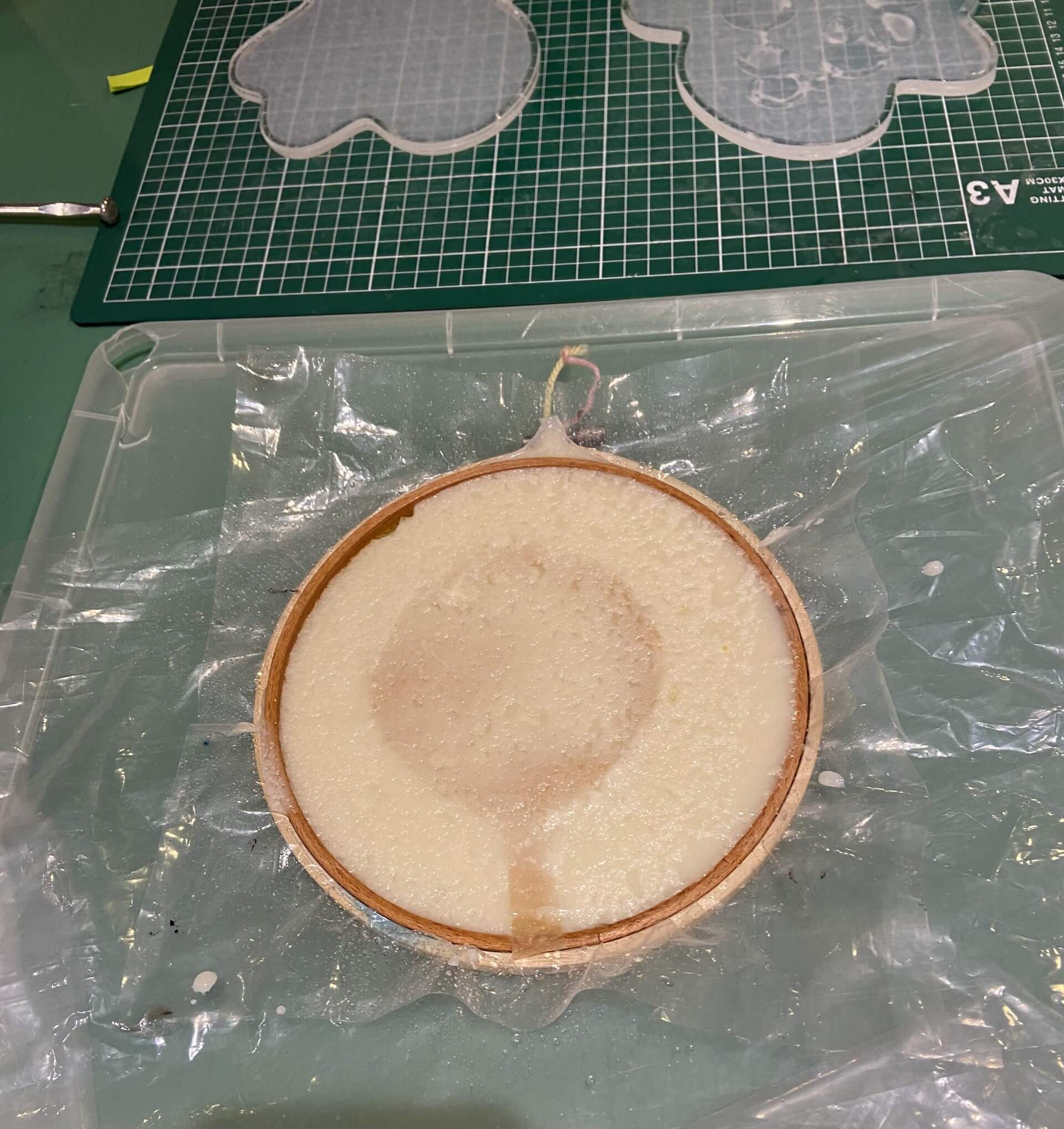
I could not inflate it because the upperlayer of alginate was not thick enough. I would like to try it again.